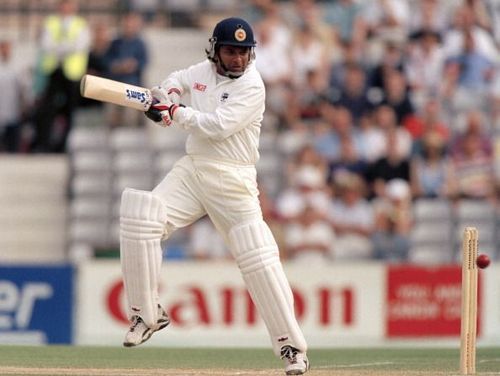
Arjuna Ranatunga's unique Test record that will never be broken

In 1996, Arjuna Ranatunga led Sri Lanka to their greatest triumph in cricket. It transformed Sri Lankan cricket much like the 1983 World Cup victory transformed Indian cricket. Ranatunga though was not the greatest matchwinner in his country’s history. The likes of Aravinda de Silva, Sanath Jayasuriya, Muttiah Muralitharan and Chaminda Vaas were the architects of Sri Lanka’s victory. But it was Ranatunga who made them believe that, despite being an underdog in most experts’ books, they could win the World Cup.
Ranatunga’s man-management skills and expertise as a strategist always hogged the headlines and his prowess as a batsman was usually under-rated. He often scored crucial 40s and 50s in the middle order, most of them coming in singles which he never ran, but walked.
Yet, among cricketers who regularly batted in the top seven throughout the 1990s, Ranatunga’s strike rate of 79 was in the top ten.
Despite all this, the one word which defines his cricket career is longevity. Let’s take a closer look at that and at a record which he alone holds.
The record: Ranatunga made his debut in his country’s first Test match, against England at Colombo in February 1982.
In June 2000, Sri Lanka played Test cricket for the 100th time and Ranatunga was a part of that team as well.
Thus, he became the only Test cricketer to be a part of both his country’s first and hundredth Test match.
It is a commendable effort, but not as mighty as it might look. It took Sri Lanka 18 years to play 100 Test matches and for a quality cricketer who made his debut at a very young age, continuing for 18 years is quite possible. Let’s look at the gap between the first Test and the hundredth Test for each country:

It took England and Australia over 30 years to play 100 Tests because, in those days, barring South Africa, there weren't any teams that competed at the highest level.
South Africa’s gap of 60 years is quite remarkable, but we mustn’t forget that, from the above table, it is the only gap which includes two World Wars, each of which removed close to seven years of Test cricket. West Indies, New Zealand and India all have the second World War included in their ‘gap’.
The journey for Pakistan was smoother in comparison. Though Dudley Carew, in his book ‘To The Wicket’, feared there would be another World War from 1967 to 1973, it didn’t happen in reality and Pakistan played their first 100 Tests at an average of four Test matches per year.
The number of cricket matches played in a year increased from the 1980s onward and that has resulted in Sri Lanka playing 100 Test matches in fewer than 20 years. Zimbabwe too should have made it within that time frame, but, due to various reasons, they did not play any Test cricket between October 2005 and July 2011. This resulted in them reaching the coveted milestone in 24 years.
Bangladesh took 16 years to reach the mark and even though many people believe that they do not play enough Test matches, they have been the fastest to reach the milestone in question.
Now, let’s look at another table detailing the cricketers with the longest career span at the top level among the ones who appeared in their country’s first Test match.

From the above table, it is clear that no player barring Ranatunga, after making his debut in his country’s inaugural Test match, played for over 18 years. Hanif Mohammad and Jack Blackham did play for 17 years but in far fewer Test matches. Among the cricketers mentioned in the above table, only Hanif was younger than Ranatunga when he made his debut for Pakistan.
Considering a fairly long career in terms of Test matches, only Ranatunga, Flower and Hanif had a very impressive proportion of matches played during their active careers.
The 89% for Ranatunga does speak volumes of his calibre, fitness, and form over the duration of the 1980s and 1990s, which made him a true legend of the game.